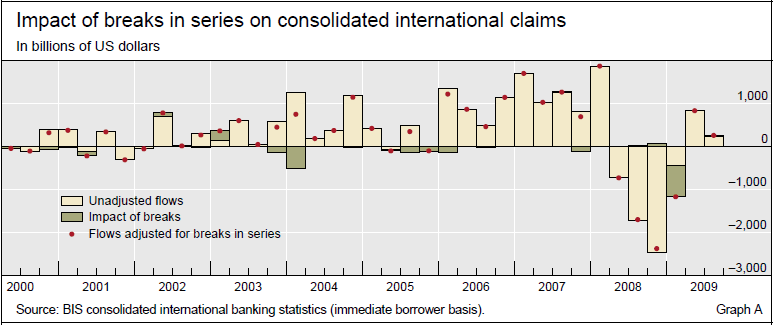Impact of the reclassification of US investment banks
(Extract from page 19 of BIS Quarterly Review, March 2010)
In September 2008, the remaining US investment banks became bank holding companies. As a result, the figures for the United States in the BIS consolidated banking statistics now include the international positions of these institutions. The expansion in the reporting population took place in the first quarter of 2009, and led to a $696 billion increase in aggregate international claims in the BIS consolidated banking statistics on an immediate borrower basis and a $903 billion increase in aggregate foreign claims in the BIS consolidated banking statistics on an ultimate risk basis.
In addition to that break, several smaller breaks occurred in the first quarter of 2009. In the case of the consolidated banking statistics on an immediate borrower basis, they added up to approximately $36 billion. As a result, even though aggregate consolidated claims on an immediate borrower basis were reported to have declined by $434 billion in the first quarter, the actual decline was approximately $1,166 billion, once correction is made for the changes in the reporting population that took place during that period (Graph A). In the case of the consolidated banking statistics on an ultimate risk basis, the additional breaks added up to $106 billion, resulting in an aggregate break of $1,009 billion.
The figures in the consolidated banking statistics published by the BIS are not adjusted for breaks in series. However, the BIS communicates all important breaks in the press release that accompanies the publication of the data. In addition, a separate document, which is updated every quarter and is available on the BIS website (www.bis.org/statistics/breakstablescons.pdf), provides details on the period of the change, the reporting country, the reason for the break and the net changes in aggregate assets and liabilities that resulted from it.

